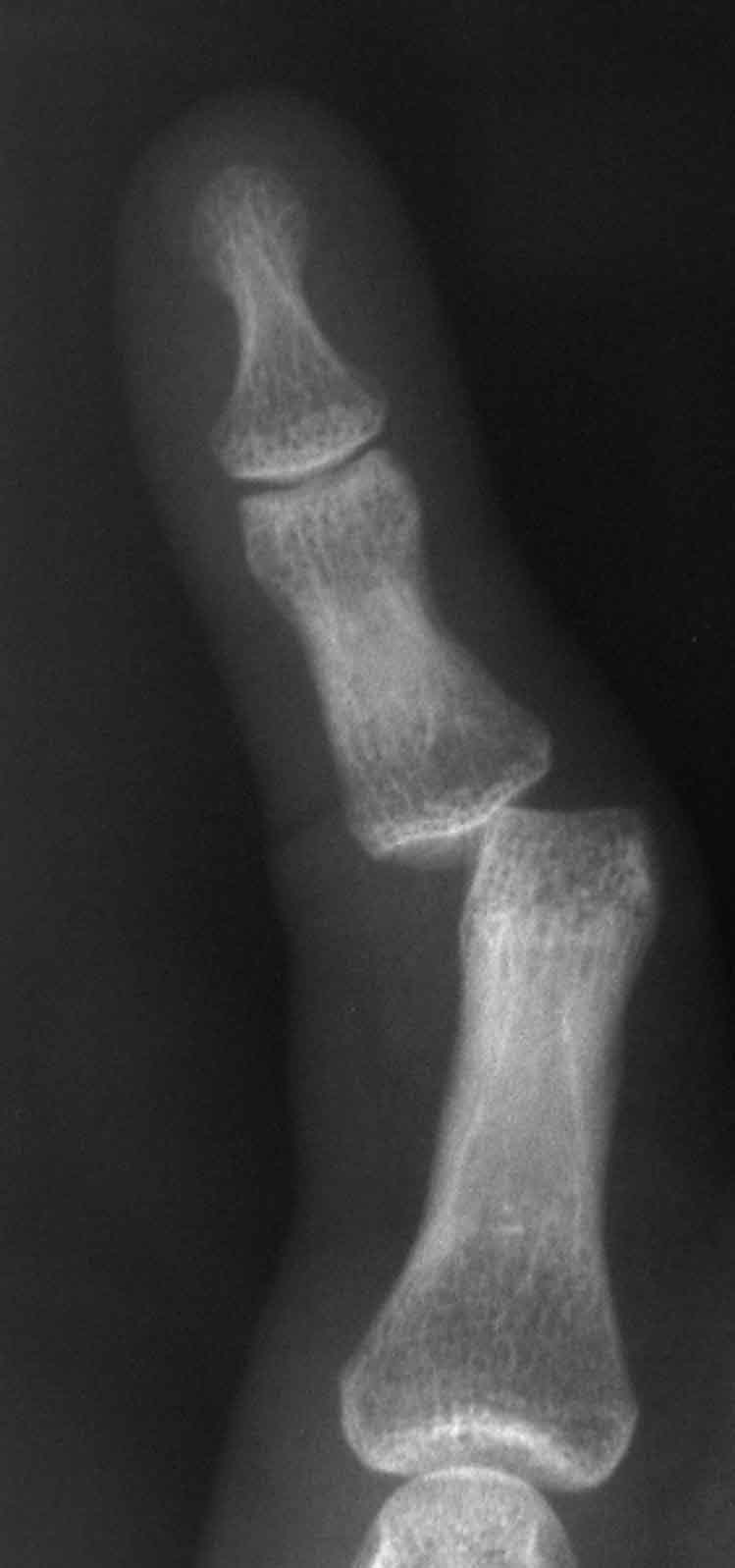Dislocations of the finger joints are common. They usually occur when the finger is forcibly bent during a fall or when the finger is hit by a cricket ball. There will be immediate pain and the finger will look deformed and bent. The first finger joint (the proximal interphalangeal joint) is the most commonly injured finger joint, but any of the finger joints can be dislocated.

If it is possible the finger may be reduced immediately by pulling along the length of the finger. In most cases this reduction will be associated with a palpable 'clunk', a correction of the deformity and a reduction in pain. If this is not possible the dislocation will be reduced in the Emergency department.
An x-ray is recommended even after the dislocated joint has been reduced as these injuries can be associated with a fracture which may require treatment. An examination will identify any associated injuries to the tendons or joint ligaments.
Treatment:
The majority of finger dislocations are treated by strapping the injured finger to an adjacent uninjured finger. This allows some protection of the finger and it encourages early movement, which is important. Some dislocation which have injuries to the joint ligaments of fractures require surgical treatment, but this is not common.
Prognosis:
Most of these injuries heal without long-term problems. It is however common to develop;
of the finger joint. Physiotherpay may be helpful in improving the stiffness. It usually takes up to 18 months for any stiffness and swelling to completely resolve. It is not unusual to notice a permanent loss of the final few degrees of finger extension, although this does not usually cause a limitation in function.